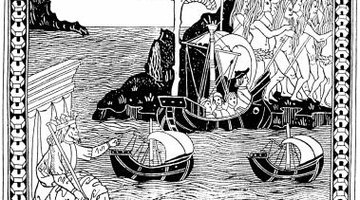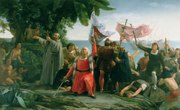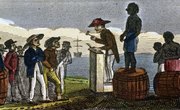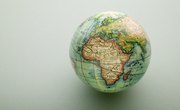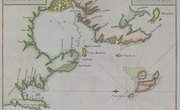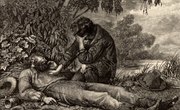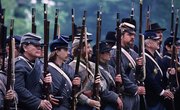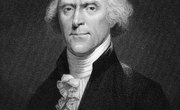While Italian explorer Christopher Columbus wasn’t the first to reach the Americas, his voyages were the first to establish contacts between Europe and the New World. Columbus changed the way that people of his time saw the world when he decided to sail west across the Atlantic Ocean and accidentally landed in San Salvador, thinking it was Asia. Consequently, the explorer’s travels brought riches to the Spanish monarchy that were ultimately more valuable than gold.
Helped Increase Spain's Political Power
By uniting their kingdoms, Ferdinand of Aragon and Isabella of Castile ruled most of the land in modern-day Spain, according to the PBS website. After the eradication of the Moorish empire from Iberia, and after Columbus discovered the New World, the 1494 Treaty of Tordesillas recognized Spain’s exclusive rights to the lands west of the Cape Verde Islands off the west coast of Africa, according to the Encyclopedia Britannica website. These lands were American continents and the islands in the Atlantic Ocean. The treaty proved beneficial to Spain as Columbus’ voyages led him through the Caribbean and as far south as Panama, making the Spanish monarchy among the most powerful in Europe and the world.
Settled New Territories for Spain
Isabella was interested in strengthening Spanish commercial prospects overseas, so she and Ferdinand agreed to sponsor Columbus’ new route to Asia across the Atlantic Ocean after the Portuguese and British denied his request, according to the History website. In 1492, Columbus founded the settlement of La Navidad in present-day Haiti, and landed at what is now the Dominican Republic, part of the land that Columbus called Hispaniola. The explorer was the first in Europe to colonize territories in the New World, and he did so on behalf of the Spanish monarchy. Later Columbus established La Isabella and other settlements in Hispaniola, and Spain began conquering new regions on the American continents, according to the Library of Congress.
Evangelized on Behalf of Spain
While a dream of finding wealth drove Columbus’ voyages, Columbus and the Spanish monarchy also sought to spread Christianity, according to the Encyclopedia Britannica website. Columbus witnessed the siege at Granada, which was a victory for Spanish Christians and the throne. The Library of Congress affirms that religion went hand-in-hand with Columbus’ expeditions as the monarchy sought to conquer and Christianize the new lands. Ferdinand and Isabella directed Columbus and his crew to maintain friendly relations with the indigenous people they encountered in hopes of converting the natives and securing trade agreements. While many of the native populations decreased when the Spanish arrived, the efforts to convert the indigenous residents largely succeeded.
Brought Material Goods
The material riches that Columbus and the Spanish monarchy sought from the far-flung travels included gold, gems, spices and fine materials, such as silk. The first places that Columbus found gold was at the Las Isabella settlement, and further inland in present-day Haiti and the Dominican Republic. When he first returned to Spain, Columbus presented the Spanish monarchy with the little gold he found, as well as tobacco plants, turkeys, aji peppers and hammocks -- items that were foreign to the Spaniards. Future travels to the New World by Columbus and explorers that followed led to the discovery of more gold, other precious metals, and other foods for the Spanish monarchy.
Related Articles
References
Writer Bio
Flora Richards-Gustafson has been writing professionally since 2003. She creates copy for websites, marketing materials and printed publications. Richards-Gustafson specializes in SEO and writing about small-business strategies, health and beauty, interior design, emergency preparedness and education. Richards-Gustafson received a Bachelor of Arts from George Fox University in 2003 and was recognized by Cambridge's "Who's Who" in 2009 as a leading woman entrepreneur.

